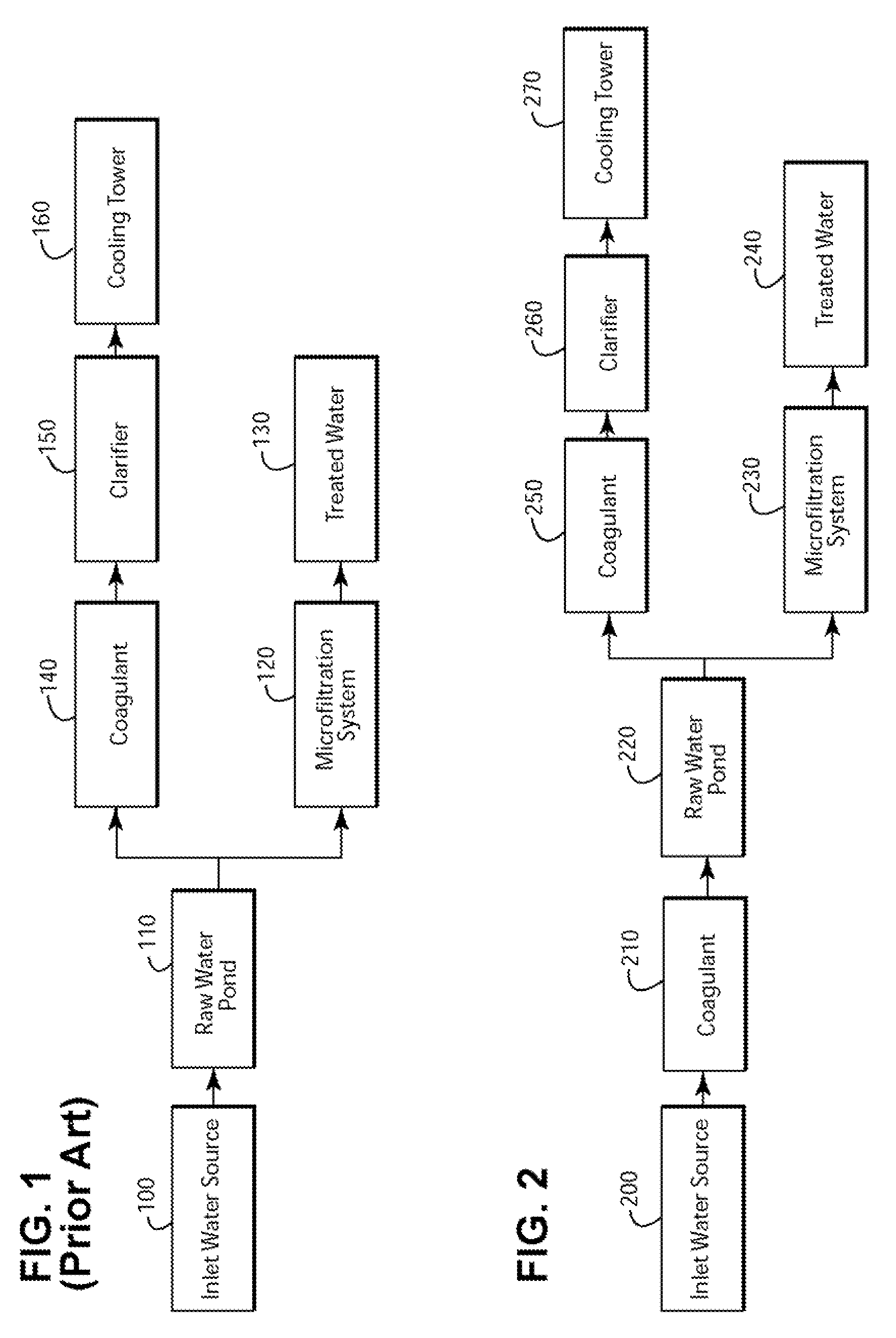Method for reducing fouling in microfiltration systems
- Summary
- Abstract
- Description
- Claims
- Application Information
AI Technical Summary
Benefits of technology
Problems solved by technology
Method used
Image
Examples
example
[0028]Raw water from a river was collected and measured for turbidity, color, total organic carbon (TOC) and aluminum carryover, as compared to the same water with various dosages of two different cationic coagulants, polyaluminum chloride (PAC) and Klaraid CDP 1348™ (GE Betz Canada, Inc., Mississauga, Ontario, Canada). The results are shown in the following tables.
PAC DosageTurbidityColorTOCAluminumppmNTUPTCppmppmRAW49.11869.161002.69587.860.291202.47384.010.231402.51193.820.19
Klaraid CDP 1348TurbidityColorTOCAluminumDosage (ppm)ppmppmppmppmRAW49.11869.16 801.7184.920.081001.7084.730.091202.35104.830.13
[0029]Klaraid CDP 1348™ exhibited the best overall results, including best color removal, and lowest aluminum carryover. As shown, the optimal dosage for this coagulant was at a 30 to 40% lower level than PAC.
PUM
 Login to View More
Login to View More Abstract
Description
Claims
Application Information
 Login to View More
Login to View More - R&D
- Intellectual Property
- Life Sciences
- Materials
- Tech Scout
- Unparalleled Data Quality
- Higher Quality Content
- 60% Fewer Hallucinations
Browse by: Latest US Patents, China's latest patents, Technical Efficacy Thesaurus, Application Domain, Technology Topic, Popular Technical Reports.
© 2025 PatSnap. All rights reserved.Legal|Privacy policy|Modern Slavery Act Transparency Statement|Sitemap|About US| Contact US: help@patsnap.com

